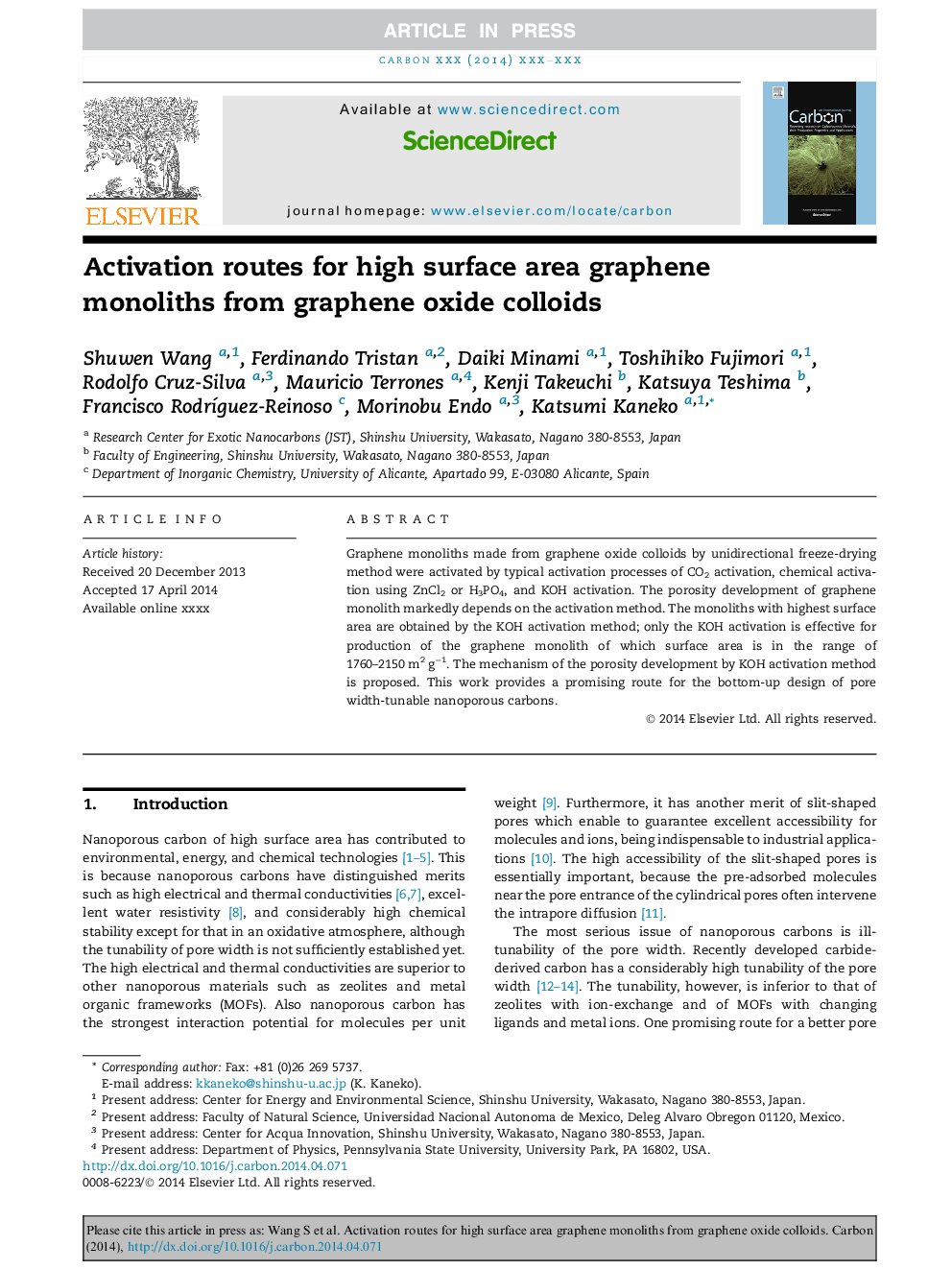| Article ID | Journal | Published Year | Pages | File Type |
|---|---|---|---|---|
| 7853507 | Carbon | 2014 | 12 Pages |
Abstract
Graphene monoliths made from graphene oxide colloids by unidirectional freeze-drying method were activated by typical activation processes of CO2 activation, chemical activation using ZnCl2 or H3PO4, and KOH activation. The porosity development of graphene monolith markedly depends on the activation method. The monoliths with highest surface area are obtained by the KOH activation method; only the KOH activation is effective for production of the graphene monolith of which surface area is in the range of 1760-2150Â m2Â gâ1. The mechanism of the porosity development by KOH activation method is proposed. This work provides a promising route for the bottom-up design of pore width-tunable nanoporous carbons.
Related Topics
Physical Sciences and Engineering
Energy
Energy (General)
Authors
Shuwen Wang, Ferdinando Tristan, Daiki Minami, Toshihiko Fujimori, Rodolfo Cruz-Silva, Mauricio Terrones, Kenji Takeuchi, Katsuya Teshima, Francisco RodrÃguez-Reinoso, Morinobu Endo, Katsumi Kaneko,
